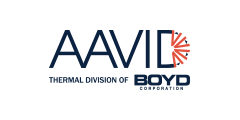BOYD Develops a Cooling Solution for Infineon Power Module Family, HybridPACK™ DSC for Hybrid and Electric Vehicles

Project Details
Customer:Infineon
Application:Electric and Hybrid Vehicles
Technology:Liquid Cooling
Industry:Automotive
Location:Germany
Challenge
The development and production of electric and hybrid vehicles
has been on the rise over the last 2 decades and this trend is likely to
increase exponentially over the next 20 years. As automotive
manufacturers look to utilize cleaner, cheaper energy and meet CO2
regulations worldwide by 2020, electric and hybrid vehicles will become a
much larger part of the market.
However, the power needed to run a vehicle combined with design needs for compact, lightweight inverters has made thermal management an important stumbling-block for automotive engineers and manufacturers.Thermal solutions for these power modules must be lightweight, small enough to fit within the power train, powerful enough to cool extremely hot components, and cost efficient enough not to raise the price points on these vehicles.
To overcome these challenges, Infineon Technologies came to BOYD, for help in developing a cooling solution for their latest power module family, HybridPACK™ Double Sided Cooling (DSC) for hybrid and electric vehicles. Their dimensions and characteristics allow these modules to be more flexible with a compact design of the overall application and can dissipate heat on both sides of the module. Infineon and our European Design Center studied a concept for a liquid cooling solution able to provide the specific performance level.
Solutions
The specifications for this application: power to be dissipated
by each of the three DSC modules, electronic connections and
integration, and boundary conditions. Starting from the characteristics
of DSC modules and the requested thermal resistance and pressure drop,
Boyd began the analysis of possible concepts of Liquid Cold Plates
(LCPs); the basic idea was to put one LCP on top and one LCP on the
bottom, in order to cool the two active sides of each module.
Different key points have been considered: overall geometry, internal cooler structure, wall thicknesses, inlet and outlet position, top-bottom connection, mounting technique and target cost. The geometry has been defined by the main mechanical constraints: dimensions of the active area of DSC modules, available space around the modules and integration with the overall system.
The internal structure has been defined according to the requested performance level (thermal resistance and pressure drop), and the key was to add an accurately optimized turbulator in order to increase the exchange surface and the convection heat exchange coefficient, while keeping pressure drop under the established limit; CFD simulations have been made. The material thickness has been properly evaluated in order to withstand the requested operating and testing pressure. Further analysis was focused on the connection between top and bottom Liquid Cold Plate (LCP) and the position of inlet and outlet; at this stage, the connection between top and bottom has been considered external to the LCP itself, made by means of flexible tubes and clamps (each LCP has one inlet and one outlet port). In this way, a parallel connection between the top and bottom LCP has been obtained, with the advantage of having two equal parallel flows and consequently the same performance level on the two LCPs.
Finally, the mechanical clamping between top and bottom has been studied: considering the minimum clearance and cree page distances to be guaranteed, eight fixing point have been added, externally to the active exchange surface area. The mechanical connection between top and bottom can be done either with fast features such as rivets or with screws. Prototypes of this concept have been made in order to validate the thermal and mechanical analysis and the results of the experimental tests confirmed that it is suitable to withstand the requested pressure and to guarantee both the indicated thermal resistance and pressure drop. For the first prototypes, rivets have been used to clamp top and bottom Liquid Cold Plates.
The concept developed by Boyd and the availability of prototypes enable the automotive industry to quickly design efficient inverters for hybrid and electric vehicles using Infineon HybridPACK DSC modules.
- +1 Like
- Add to Favorites
Recommend
- Aavid‘s Liquid Cooling Systems: Modular or fully customized liquid cooling optimized for improved heat dissipation in condensed volumes
- Boyd Corporation Acquires Lytron, Expands Liquid Cooling Offerings
- Liquid to Liquid Ambient Cooling Systems for Semiconductor Tools
- Laird Thermal Systems’ Prototyping Liquid Cooling Systems
- Generative AI and EV Batteries: Why Liquid Cooling?
- Aavid‘s Modular Liquid Cooling Systems: Build a semi-custom system with high performance compatible components
- Laird Thermal Systems Provides the Liquid Cooling Options for PET and SPECT Scanners
- Common Coolant Types and Their Uses in Liquid Cooling Systems
This document is provided by Sekorm Platform for VIP exclusive service. The copyright is owned by Sekorm. Without authorization, any medias, websites or individual are not allowed to reprint. When authorizing the reprint, the link of www.sekorm.com must be indicated.





























































































































































































































































































































































































































































































































































































































































































































































































































































































